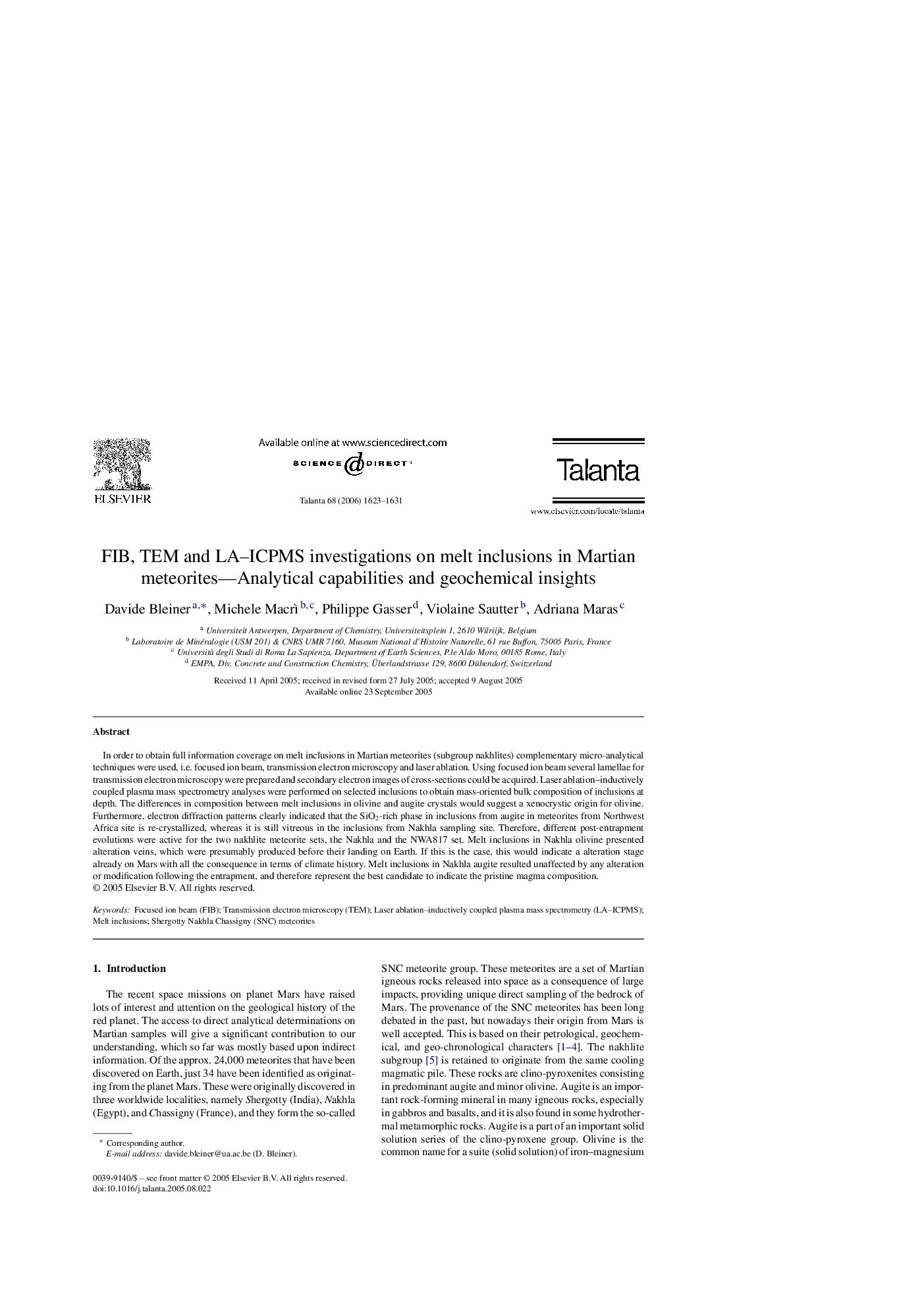| Article ID | Journal | Published Year | Pages | File Type |
|---|---|---|---|---|
| 1246581 | Talanta | 2006 | 9 Pages |
In order to obtain full information coverage on melt inclusions in Martian meteorites (subgroup nakhlites) complementary micro-analytical techniques were used, i.e. focused ion beam, transmission electron microscopy and laser ablation. Using focused ion beam several lamellae for transmission electron microscopy were prepared and secondary electron images of cross-sections could be acquired. Laser ablation–inductively coupled plasma mass spectrometry analyses were performed on selected inclusions to obtain mass-oriented bulk composition of inclusions at depth. The differences in composition between melt inclusions in olivine and augite crystals would suggest a xenocrystic origin for olivine. Furthermore, electron diffraction patterns clearly indicated that the SiO2-rich phase in inclusions from augite in meteorites from Northwest Africa site is re-crystallized, whereas it is still vitreous in the inclusions from Nakhla sampling site. Therefore, different post-entrapment evolutions were active for the two nakhlite meteorite sets, the Nakhla and the NWA817 set. Melt inclusions in Nakhla olivine presented alteration veins, which were presumably produced before their landing on Earth. If this is the case, this would indicate a alteration stage already on Mars with all the consequence in terms of climate history. Melt inclusions in Nakhla augite resulted unaffected by any alteration or modification following the entrapment, and therefore represent the best candidate to indicate the pristine magma composition.
